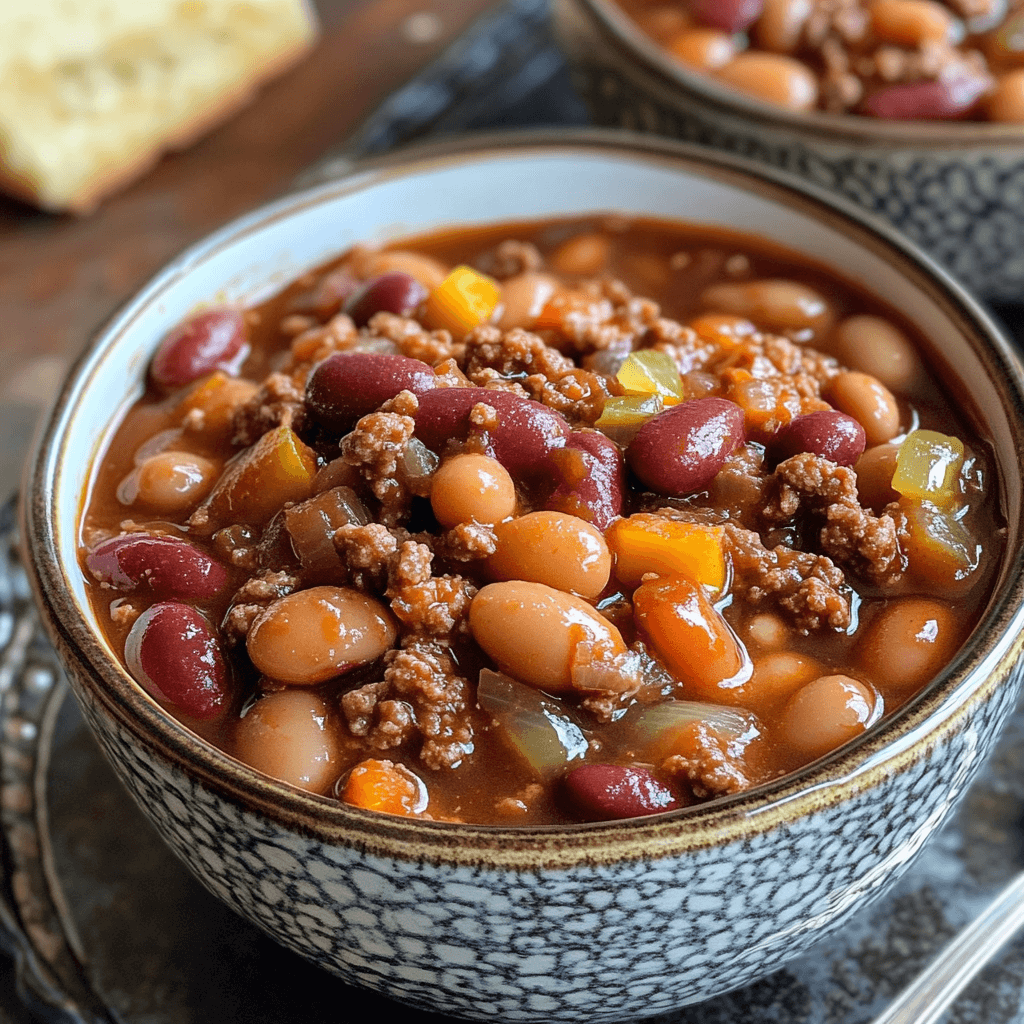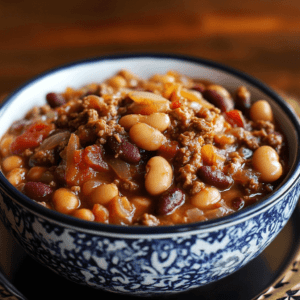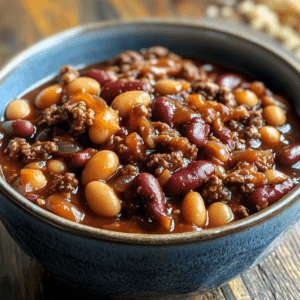Calico beans nutrition is essential for anyone seeking a wholesome and nutrient-packed addition to their meals.
Calico beans, with their unique speckled appearance, are more than just an attractive ingredient in the culinary world. These beans boast an impressive nutritional profile, making them a favorite among health enthusiasts and food lovers alike. Rich in protein, fiber, and essential vitamins, calico beans are a powerhouse of nutrition that supports overall health. From aiding digestion to promoting heart health and stabilizing blood sugar, the benefits of calico beans nutrition are remarkable. In this article, we’ll delve into the nutritional value of calico beans, their health benefits, and how you can incorporate them into your diet for optimal well-being.
Introduction to Calico Beans
History and Origin of Calico Beans
Calico beans have a rich history rooted in the Americas, where indigenous peoples cultivated them thousands of years ago. These legumes were prized for their nutritional value and adaptability in diverse climates. Over time, calico beans became a dietary staple in many cultures, particularly in Central and South America, where they are often used in traditional dishes.
Their name “calico” refers to the colorful speckled pattern on their skin, resembling calico fabric. These beans are now widely grown across the globe and appreciated for their creamy texture and ability to absorb flavors.
Culinary Uses and Popularity of Calico Beans
Calico beans are a versatile ingredient, used in a variety of cuisines. Their ability to blend seamlessly into different recipes makes them popular in:
- Soups and Stews: Their creamy texture enhances the richness of broths.
- Salads: They add a hearty, nutritious element to cold dishes.
- Baked Dishes: Often paired with barbecue sauce and meats for casseroles.
- Vegetarian and Vegan Diets: As a high-protein alternative to meat.
They are also a staple in convenience cooking, found in canned mixes or pre-packaged frozen meals.
What Makes Calico Beans Nutritious?
How Their Nutrients Benefit Your Body
Calico beans pack a punch when it comes to macronutrients:
- Proteins: Approximately 15 grams per cooked cup, offering a plant-based protein source for muscle repair and growth.
- Carbohydrates: About 45 grams per serving, primarily from complex carbohydrates that provide sustained energy.
- Fats: With less than 1 gram of fat per serving, they are a naturally low-fat food.
Vitamins and Minerals in Calico Beans
Calico beans are brimming with essential vitamins and minerals:
- Iron: Supports oxygen transportation and energy production.
- Magnesium: Vital for nerve and muscle function.
- Folate: Crucial for DNA synthesis and prenatal health.
- Zinc: Boosts immunity and supports enzymatic functions.
- Potassium: Helps regulate blood pressure and fluid balance.
Fiber Content and Its Benefits
Dietary fiber is a standout component, with calico beans providing nearly 15 grams per serving. Benefits include:
- Enhanced digestion and regularity.
- Lower cholesterol levels, reducing cardiovascular risks.
- Increased feelings of fullness, aiding in weight management.
Calorie Count and Nutrient Density
Calico beans are nutrient-dense, with about 230 calories per cooked cup. They provide a wealth of nutrition without adding excessive calories, making them ideal for maintaining a healthy weight.
Top Reasons to Include Them in Your Diet
Simple Ways to Make Them Part of Your Weekly Meals
Calico beans are a weight-loss-friendly food thanks to their combination of protein, fiber, and low-calorie content. The fiber promotes satiety, while the protein helps preserve lean muscle mass during calorie deficits. Studies have shown that consuming legumes regularly can lead to improved body composition and reduced calorie intake.
Contribution to Heart Health
Calico beans contribute to cardiovascular health in several ways:
- Lowering Cholesterol: The soluble fiber binds to cholesterol molecules, reducing LDL levels.
- Regulating Blood Pressure: The potassium content helps counteract the effects of sodium.
- Anti-inflammatory Effects: Antioxidants in calico beans reduce inflammation, which is a risk factor for heart disease.
Managing Blood Sugar Levels
The low glycemic index (GI) of calico beans ensures a steady release of glucose into the bloodstream. This is particularly beneficial for people with diabetes or those at risk of developing the condition. The high fiber content also slows digestion, preventing sudden blood sugar spikes.
Antioxidant Properties and Immune Support
Polyphenols and other antioxidants in calico beans combat oxidative stress, reducing the risk of chronic diseases like cancer and neurodegenerative disorders. Additionally, these antioxidants support a healthy immune system by protecting cells from damage.
Bone and Muscle Support
Calico beans contain magnesium, calcium, and phosphorus, which are essential for bone health. Their protein content also plays a key role in maintaining muscle strength, particularly in older adults.
How Calico Beans Compare to Other Beans
Nutritional Comparison with Kidney Beans
Calico beans and kidney beans share many similarities, but there are notable differences:
- Fiber Content: Calico beans tend to have slightly more fiber, making them better for digestive health.
- Calorie Count: They are marginally lower in calories than kidney beans.
- Texture and Flavor: Calico beans are creamier, while kidney beans have a firmer texture.
Differences in Cooking and Flavor
Calico beans’ mild flavor makes them highly versatile. Unlike black beans, which have an earthy taste, or chickpeas, which are nutty, calico beans take on the flavors of the seasonings and ingredients they’re cooked with.
Cooking Tips for Flavorful and Nutritious Dishes
Soaking and Cooking Methods
Proper preparation is key to unlocking the full potential of calico beans:
- Soak: Soak beans overnight to reduce cooking time and improve digestibility.
- Rinse: Drain and rinse thoroughly to remove any residual anti-nutrients.
- Cook: Simmer on the stovetop for 1-2 hours or use a pressure cooker for quicker results.
Flavor Enhancements
- Add aromatics like garlic, onion, and bay leaves during cooking.
- Finish with a drizzle of olive oil or a squeeze of lemon juice for added flavor.
Popular Recipes Featuring Calico Beans
- Calico Bean Chili: A hearty combination of beans, ground beef, and tomatoes, perfect for winter meals.
- Baked Calico Beans with Barbecue Sauce: A sweet and tangy dish often served as a side at barbecues.
- Calico Bean Salad: A protein-packed salad with corn, bell peppers, and a vinaigrette dressing.
Addressing Potential Concerns About Beans
Digestive Issues and How to Prevent Them
Calico beans, like other legumes, contain oligosaccharides, which can cause bloating and gas. However, soaking beans and discarding the soaking water significantly reduces these effects.
Allergies and Sensitivities
While rare, some individuals may have allergies to legumes. Symptoms may include nausea, hives, or difficulty breathing. Consult a healthcare professional if you suspect an allergy.
Anti-Nutrient Concerns
Calico beans contain phytates, which can inhibit the absorption of certain minerals. Soaking and cooking the beans neutralize most of these anti-nutrients, making them safe to consume regularly.
FAQs About Calico Beans
1. What are Calico beans commonly used for?
Calico beans are a versatile ingredient commonly used in soups, casseroles, salads, and side dishes. Their naturally creamy texture adds richness to recipes, while their ability to absorb and enhance the flavors of seasonings and other ingredients makes them a favorite in many cuisines. Whether paired with bold spices in hearty stews or served as a protein-rich addition to fresh salads, calico beans bring both flavor and nutrition to a wide range of dishes.
2. Are Calico beans suitable for a gluten-free diet?
Yes, calico beans are naturally gluten-free, making them an excellent choice for individuals with gluten sensitivities or those following a gluten-free diet. They provide a nutritious alternative to wheat-based products, offering high levels of fiber, protein, and essential nutrients without the risk of triggering gluten-related symptoms. As a versatile ingredient, calico beans can be used in a variety of dishes to create satisfying, gluten-free meals.
3. How much protein is in Calico beans?
A cooked cup of calico beans contains approximately 15 grams of protein, making them an excellent source of plant-based protein. This protein content supports muscle growth, repair, and overall health, making calico beans a valuable addition to vegetarian, vegan, or flexitarian diets. They also pair well with other foods like grains or vegetables to create balanced, nutrient-dense meals.
4. Can Calico beans help with weight loss?
Yes, calico beans are an excellent choice for weight management due to their high fiber and protein content. Fiber helps slow digestion, promoting a feeling of fullness and reducing the likelihood of overeating. Protein also plays a key role in satiety, helping to curb hunger and support muscle maintenance during weight loss. By incorporating calico beans into meals, you can enjoy a nutritious, satisfying food that may help reduce overall calorie intake and support healthy weight management.
5. Are there any side effects of eating Calico beans?
Excessive consumption of beans, including calico beans, may lead to bloating or gas due to their high fiber content and natural compounds like oligosaccharides. However, these effects can be minimized with proper preparation methods. Soaking the beans overnight, rinsing them thoroughly before cooking, and cooking them until they are very soft can help reduce the compounds that cause digestive discomfort. Adding digestive aids, such as spices like cumin or ginger, to the cooking process may also help improve digestion and make beans more enjoyable to eat.
6. What is the best way to store cooked Calico beans?
To keep cooked beans fresh and safe to eat, store them in an airtight container in the refrigerator for up to five days. If you need to store them for a longer period, you can freeze them. Simply place the beans in a freezer-safe container or resealable bag, remove as much air as possible, and freeze. Proper storage helps preserve their flavor, texture, and nutritional value, making them convenient for future meals.
7. Can Calico beans be sprouted?
Yes, calico beans can be sprouted, which is a great way to enhance their nutrient bioavailability. Sprouting activates enzymes within the beans, making essential nutrients like vitamins, minerals, and amino acids more accessible for absorption by the body. Additionally, the sprouting process helps reduce the levels of anti-nutrients, such as phytic acid, that can interfere with the absorption of important minerals. This makes sprouted calico beans not only more nutritious but also easier to digest, making them a fantastic addition to a healthy diet.
8. Are Calico beans suitable for children?
Absolutely! Calico beans are packed with nutrients, making them an excellent addition to a child’s diet. They are rich in fiber, protein, vitamins, and minerals, all of which are essential for growth and development. To ensure they are gentle on a child’s digestive system, it’s important to cook them thoroughly until they are soft and easy to digest. This helps break down complex carbohydrates, making them more suitable for young tummies while retaining their nutritional benefits.
9. How do Calico beans support gut health?
The dietary fiber found in calico beans plays an essential role in supporting gut health by feeding beneficial bacteria in the digestive system. These bacteria thrive on fiber, producing short-chain fatty acids (SCFAs) as a byproduct, which help maintain the integrity of the gut lining, reduce inflammation, and support overall digestive health. By promoting a healthy and diverse microbiome, the fiber in calico beans contributes not only to better digestion but also to enhanced immunity and overall well-being.
10. Can Calico beans be included in a ketogenic diet?
Calico beans are a nutrient-dense food, appreciated for their high fiber content, which is essential for supporting digestion, promoting satiety, and contributing to overall gut health. Fiber-rich foods like calico beans can also help stabilize blood sugar levels and support heart health. However, despite their many nutritional benefits, calico beans also contain a significant amount of carbohydrates.
For those following strict keto diets, which rely on minimal carbohydrate intake to achieve and maintain a state of ketosis, the carbohydrate content in calico beans can be problematic. Including them in a keto meal plan might exceed the daily carb limit, potentially disrupting ketosis. While calico beans can be a great addition to many balanced diets, they are generally less suitable for individuals adhering to a strict ketogenic approach.
Conclusion: Unlocking the Nutritional Potential of Calico Beans
Incorporating Calico beans nutrition into your regular diet is an easy step toward better health and well-being. Calico beans are a true testament to how simple, natural foods can provide immense health benefits. Their rich combination of protein, fiber, and essential nutrients makes them an invaluable addition to any diet. Whether you’re aiming to improve heart health, manage weight, or explore versatile culinary options, calico beans nutrition delivers on all fronts. By including these nutrient-dense beans in your meals, you can enjoy both their delightful flavor and their contribution to a healthier lifestyle. So, embrace the goodness of calico beans and let their nutrition fuel your journey to better health.
So go ahead—grab a bag of these vibrant legumes and start experimenting in the kitchen. Your taste buds and your body will thank you.
Related article:
How to Thicken Up Calico Beans?



